Showing Spotlights 801 - 808 of 2778 in category All (newest first):
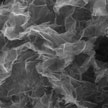 As two-dimensional (2D) materials gain more and more importance - thanks to their exotic electronic properties and abundant active sites - the development of high-yield, efficient, fast and low-cost synthesis methods to advance these materials from the laboratory to industry has become an urgent issue. Now, researchers have developed a general and rapid molten salts method that can synthesize various ion-intercalated 2D metal oxides and hydroxides, such as cation-intercalated manganese oxides, cation-intercalated tungsten oxides, and anion-intercalated metal hydroxides.
As two-dimensional (2D) materials gain more and more importance - thanks to their exotic electronic properties and abundant active sites - the development of high-yield, efficient, fast and low-cost synthesis methods to advance these materials from the laboratory to industry has become an urgent issue. Now, researchers have developed a general and rapid molten salts method that can synthesize various ion-intercalated 2D metal oxides and hydroxides, such as cation-intercalated manganese oxides, cation-intercalated tungsten oxides, and anion-intercalated metal hydroxides.
Jun 23rd, 2017
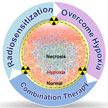 A look at the emerging roles of nanotechnology in the rapidly evolving domain of modern/future radiation therapy. In an effort to devise novel and more effective anticancer regimes, a rapidly growing community of researchers is applying the unique properties of nanomaterials to combat the unmet challenges posed by classical radiation therapy - which has become one of the most effective and frequently applied cancer therapies. However, despite a plethora of preclinical studies, nanoparticle mediated combination RT/phototherapy has not yet been translated in the clinic.
A look at the emerging roles of nanotechnology in the rapidly evolving domain of modern/future radiation therapy. In an effort to devise novel and more effective anticancer regimes, a rapidly growing community of researchers is applying the unique properties of nanomaterials to combat the unmet challenges posed by classical radiation therapy - which has become one of the most effective and frequently applied cancer therapies. However, despite a plethora of preclinical studies, nanoparticle mediated combination RT/phototherapy has not yet been translated in the clinic.
Jun 22nd, 2017
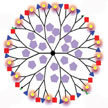 Dendrimers have emerged as a powerful class of nanomaterials in nanomedicine due to their unique structural features: globular, well-defined, highly branched and controllable nanostructures where the presence of several terminal groups can be functionalized with different ligands simulating the multivalency present in different biological systems. A recent review article identifies the currently existing dendritic systems and discusses their strengths and caveats in the context of attaining efficient therapeutic strategies for the treatment of neurological disorders.
Dendrimers have emerged as a powerful class of nanomaterials in nanomedicine due to their unique structural features: globular, well-defined, highly branched and controllable nanostructures where the presence of several terminal groups can be functionalized with different ligands simulating the multivalency present in different biological systems. A recent review article identifies the currently existing dendritic systems and discusses their strengths and caveats in the context of attaining efficient therapeutic strategies for the treatment of neurological disorders.
Jun 21st, 2017
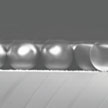 Sometimes nanoscale diamonds contain a specific type of impurity: a single nitrogen atom where a carbon atom should be, with an empty space right next to it, resulting from a second missing carbon atom. This nitrogen-vacancy (NV) impurity gives each nanodiamond special optical and electromagnetic properties. Nitrogen vacancy centers in nanodiamonds require a method to manipulate their electron spin orientations physically. Recent work demonstrates a general active NV system: Nanodiamond swimmers that self-propel.
Sometimes nanoscale diamonds contain a specific type of impurity: a single nitrogen atom where a carbon atom should be, with an empty space right next to it, resulting from a second missing carbon atom. This nitrogen-vacancy (NV) impurity gives each nanodiamond special optical and electromagnetic properties. Nitrogen vacancy centers in nanodiamonds require a method to manipulate their electron spin orientations physically. Recent work demonstrates a general active NV system: Nanodiamond swimmers that self-propel.
Jun 20th, 2017
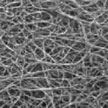 In spite of the numerous research efforts regarding the development of miniaturized, low-cost, and highly sensitive sensors based on different organic and semiconducting materials, carbon nanotubes still remain the most promising ones. An international team of researchers has now developed a simple way for fabrication and operation of carbon nanotube-based chemical sensors. The sensor consists of carboxylated single-walled carbon nanotubes, which were spin-coated over the polymer substrate between sputtered metal electrodes.
In spite of the numerous research efforts regarding the development of miniaturized, low-cost, and highly sensitive sensors based on different organic and semiconducting materials, carbon nanotubes still remain the most promising ones. An international team of researchers has now developed a simple way for fabrication and operation of carbon nanotube-based chemical sensors. The sensor consists of carboxylated single-walled carbon nanotubes, which were spin-coated over the polymer substrate between sputtered metal electrodes.
Jun 19th, 2017
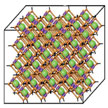 Metal-organic frameworks (MOFs) are well-ordered, lattice-like crystals. The nodes of the lattices are metals, which are connected by organic molecules. The most impressive features of MOFs are their extremely high surface area, high porosity, and tunable pore sizes, which are remarkable advantages over other porous materials (e.g., zeolites and carbons). With their special structure and large surface area, MOFs open up new opportunities for alternative systems for gas and energy storage (e.g. carbon dioxide and hydrogen storage), in catalysis, chemical sensing, as nanoreactors, and in drug delivery, making them hugely interesting for both university research and industry.
Metal-organic frameworks (MOFs) are well-ordered, lattice-like crystals. The nodes of the lattices are metals, which are connected by organic molecules. The most impressive features of MOFs are their extremely high surface area, high porosity, and tunable pore sizes, which are remarkable advantages over other porous materials (e.g., zeolites and carbons). With their special structure and large surface area, MOFs open up new opportunities for alternative systems for gas and energy storage (e.g. carbon dioxide and hydrogen storage), in catalysis, chemical sensing, as nanoreactors, and in drug delivery, making them hugely interesting for both university research and industry.
Jun 15th, 2017
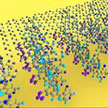 Since the early days of molecular electronics, tremendous progress has been achieved both theoretically and experimentally by scientists and engineers who were fascinated by intriguing physical, chemical phenomena, and potential device applications of molecular junctions. In a recent paper, scientists review recent experimental efforts for pursuing high-yield functional molecular devices, in which a bundle of molecules (the contacted molecules number more than 1000) is contained in a junction.
Since the early days of molecular electronics, tremendous progress has been achieved both theoretically and experimentally by scientists and engineers who were fascinated by intriguing physical, chemical phenomena, and potential device applications of molecular junctions. In a recent paper, scientists review recent experimental efforts for pursuing high-yield functional molecular devices, in which a bundle of molecules (the contacted molecules number more than 1000) is contained in a junction.
Jun 14th, 2017
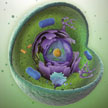 Nanotechnology is becoming a crucial driving force behind innovation in medicine and healthcare, with a range of advances including nanoscale therapeutics, biosensors, implantable devices, drug delivery systems, and imaging technologies. This article provides a comprehensive overview of healthcare advances that may be possible through nanotechnology, ranging from fitness monitoring, prevention, diagnosis to therapy, and everything in between.
Nanotechnology is becoming a crucial driving force behind innovation in medicine and healthcare, with a range of advances including nanoscale therapeutics, biosensors, implantable devices, drug delivery systems, and imaging technologies. This article provides a comprehensive overview of healthcare advances that may be possible through nanotechnology, ranging from fitness monitoring, prevention, diagnosis to therapy, and everything in between.
Jun 13th, 2017
 As two-dimensional (2D) materials gain more and more importance - thanks to their exotic electronic properties and abundant active sites - the development of high-yield, efficient, fast and low-cost synthesis methods to advance these materials from the laboratory to industry has become an urgent issue. Now, researchers have developed a general and rapid molten salts method that can synthesize various ion-intercalated 2D metal oxides and hydroxides, such as cation-intercalated manganese oxides, cation-intercalated tungsten oxides, and anion-intercalated metal hydroxides.
As two-dimensional (2D) materials gain more and more importance - thanks to their exotic electronic properties and abundant active sites - the development of high-yield, efficient, fast and low-cost synthesis methods to advance these materials from the laboratory to industry has become an urgent issue. Now, researchers have developed a general and rapid molten salts method that can synthesize various ion-intercalated 2D metal oxides and hydroxides, such as cation-intercalated manganese oxides, cation-intercalated tungsten oxides, and anion-intercalated metal hydroxides.
 Subscribe to our Nanotechnology Spotlight feed
Subscribe to our Nanotechnology Spotlight feed





